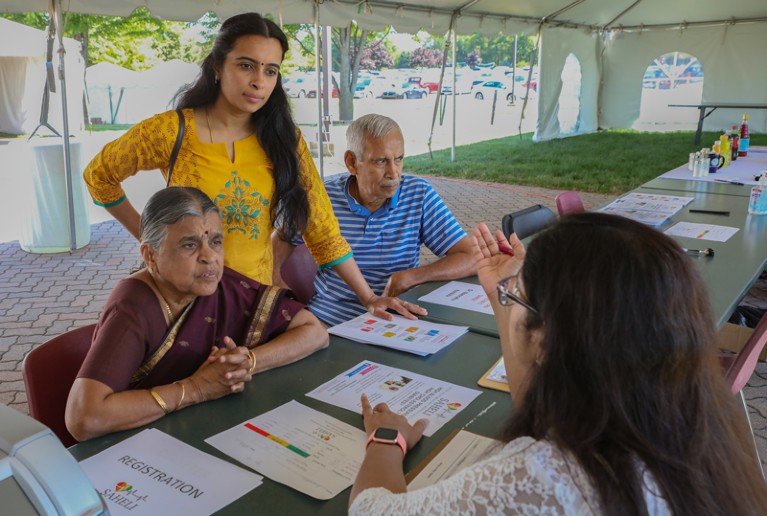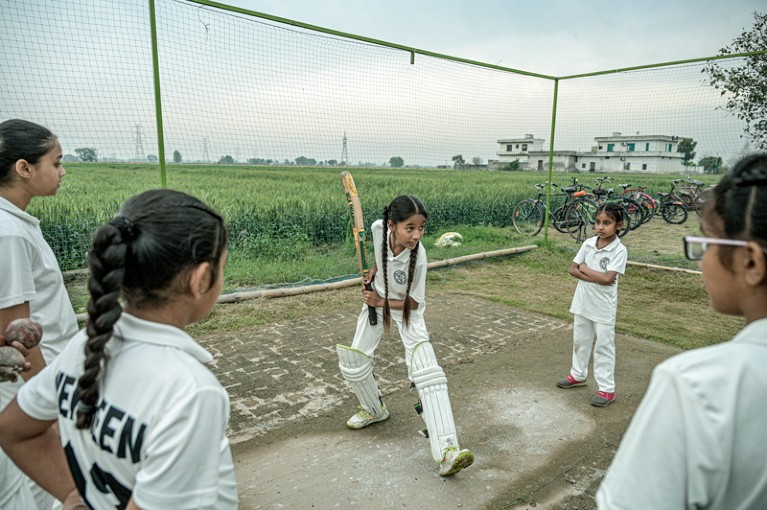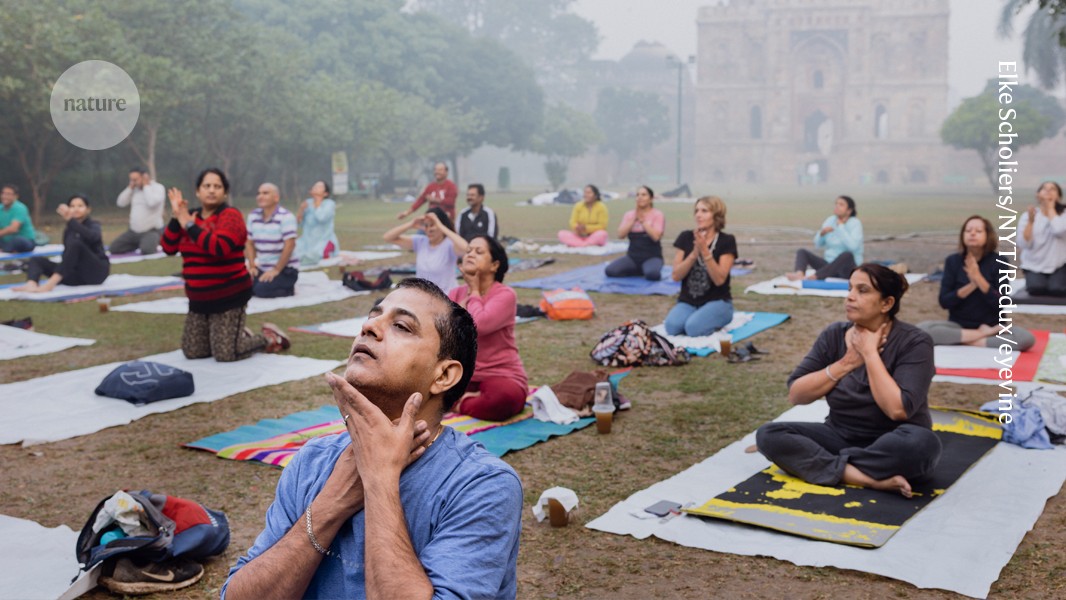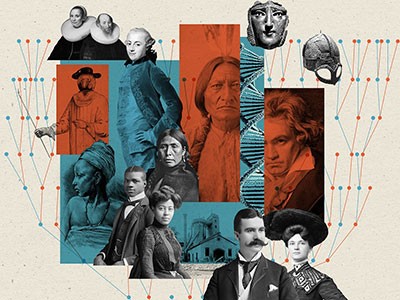Epidemiologist Mohammed Ali has been thinking about heart health for much of his life. When he was a child, he remembers two of his uncles in Pakistan having heart attacks at an early age — one died at 39. He came to find that early heart disease is common for those with South Asian ancestry. People from this region, which includes India, Pakistan, Bangladesh, Sri Lanka and the Maldives, make up about one-quarter of the world’s population, but account for up to 60% of all heart disease cases1.
“Everywhere you look, in every single South Asian group and diaspora, there is this risk which we cannot explain,” says Ali, now at Emory University in Atlanta, Georgia.
From Vikings to Beethoven: what your DNA says about your ancient relatives
It’s a challenge that researchers, clinicians and policymakers are struggling with. In what some physicians refer to as the South Asian paradox, many in this group have heart disease despite the absence of some common risk factors, such as smoking tobacco or having a high body mass index. It’s surprising, moreover, that such a large and diverse group spanning the globe and having a range of diets, socio-economic statuses and behaviours would all share this elevated risk — as well as an above-average risk for type 2 diabetes, which itself contributes to heart-disease risk. Genetics would seem to be a likely culprit, but so far, scant data have been collected for people of South Asian ancestry. This group accounts for less than 2% of genomics-study participants and less than 0.5% of participants in clinical trials focused on cardiovascular disease2.
That is starting to change. In February, researchers in India completed an effort to sequence 10,000 genomes across the country. The US National Heart, Lung and Blood Institute launched a US$4-million programme last year to assemble a study group of 10,000 people with East Asian, South Asian and southeast Asian ancestry, or those who identify as Native Hawaiian or as Pacific Islander. And a research programme called OurHealth, which launched in October 2023, aims to quantify risk factors in the South Asian community, with a focus on genetic risks. Several research groups hope that exploring the genomes of people with South Asian ancestry will lead to a fresh understanding of risk factors, opportunities for precision medicine and potential therapeutic targets.
But even as these projects kick off, some are concerned that a focus on the genetics and genomics of a broadly defined population oversimplifies the issue and carries some risk. “What genetics has done is create these new, very persuasive arguments that there are actually biological differences that make us different,” says Projit Bihari Mukharji, a science historian at Ashoka University in Sonipat, India. And that could have unintended consequences, such as further racializing medicine or promoting inaction on combating heart disease and diabetes.
Hearty history
The high rate of cardiovascular disease among South Asians wasn’t always apparent, with a 1941 study noting the opposite. It found that around 1.3% of deaths in a Mumbai hospital were due to cardiovascular disease, compared with 8.4% in the United States3. But by the late 1960s, a concerning picture started to emerge in the South Asian diaspora: in the United States, the United Kingdom, Singapore and other countries, first- and second-generation immigrants had higher rates of diabetes and cardiovascular disease when compared with other racial or ethnic groups in those places4. “We used to think this was a migrant Indian phenomenon,” says Viswanathan Mohan, a physician who specializes in diabetes in Chennai, India. But, after India opened its state-run economy to private and foreign investors in 1991, rates of diabetes and cardiovascular disease began to increase there, too — probably because of the increased availability of calorie-dense food and a decrease in physical activity thanks to increased industrialization, says Mohan.
Many epidemiological studies followed. Jitendra Singh, India’s Minister of Science and Technology, said in February that the preponderance of studies showing elevated risks across populations and even after generations living abroad points to a genetic cause. “There’s something to do with the genes, regardless of the environment they live in,” he said at an event announcing the completion of the Indian 10,000 genomes project.

A researcher discusses a heart-health programme with residents near Chicago, Illinois.Credit: Tessa Crawford/Northwestern University
Despite the limited genetics data for South Asians, scientists are hopeful that more research will lead to fruitful discoveries. Some groups of people in South Asia show strong founder effects — a low rate of genetic diversity that results from a small ancestral population — so often have genotypes that are not found elsewhere.
Some of these genotypes have helped to inform drug research. In Pakistan, researchers found a group of people who have mutations in a gene involved in producing certain triglycerides, a type of fat in the blood5. Compared with family members lacking the mutation, individuals with the mutation in both copies of the gene had reduced spikes in lipid levels after eating fatty foods, which could be protective against cardiovascular disease.
“There’s now active drug development bolstered by the fact that there are individuals out there that had two inactivated copies,” says Pradeep Natarajan, a preventive cardiologist at Massachusetts General Hospital and the Broad Institute of Harvard and MIT in Cambridge, who was involved in the study.
Ambitious survey of human diversity yields millions of undiscovered genetic variants
Some studies have also identified risk factors. About 15 years ago, researchers found a mutation in a gene encoding heart proteins in about 4% of people with Indian ancestry6. This can lead to cardiomyopathy, a relatively rare disease that weakens heart muscles. The mutation hasn’t been found in other populations, says Kumarasamy Thangaraj, a geneticist at the Center for Cellular and Molecular Biology in Hyderabad, India, who led the study. In the past few years, he and his team have found mutations in a different gene that could add to this risk, and which were also only found in people in India7. He hopes to screen people nationwide to identify those who are at risk of cardiomyopathy, and offer them counselling. “We are trying to get local government clearance to screen entire populations.” Thangaraj says.
Identifying people with a high risk of common forms of heart disease might also be possible, if challenging. Over the past decade, researchers and cardiologists have increasingly used polygenic risk scores to predict a person’s chance of developing a certain disease (see Nature 562, 181–183; 2018). These are algorithms that take into account all the genetic variants a person might have that correlate with an elevated or reduced risk of a certain disorder, and then combine them into an overall score.
Polygenic risk scores have proven predictive in some circumstances. But they are only as good as the data on which they are based, and have come up short in calculating risk for South Asian populations. One study8 of risk scores for coronary artery disease found that increasing the population diversity in the algorithm’s training data increased its accuracy — and not just for South Asians, but for all others. So adding more genome data from South Asian individuals could improve these models. But some are sceptical that focusing on the genetics of South Asians will improve their health.
Red flags and proper care
Medicine is trying to move away from taking race and ethnicity into account when delivering treatment. Race is a social classification, not a biological one, and has been often used to exclude people from treatment.
Last year, the American Heart Association (AHA) in Dallas, Texas, which creates standards for cardiologists, moved to using a clinical-risk calculator for cardiovascular disease that, in almost all cases, does not include race as a variable. But the calculator retains South Asian heritage as a “risk enhancing factor”9.
“We want race-free medicine,” says Sadiya Khan, a cardiologist at Northwestern University in Chicago, Illinois, who was the lead author of the AHA’s risk calculator. But the exception made for South Asians could be beneficial, she argues. “I’m 38 years old and most people would say ‘You’re way too young to be having a heart attack,’” says Khan, who identifies as South Asian. She hopes that the designation will serve as a “red flag” to make sure South Asians get the care they need, while researchers work out what causes this disparity. If clinicians correctly adjust their expectations when treating people from South Asia, it might save lives.

A group of girls attend cricket training in Dharoki, India. Exercising regularly can help to improve heart health, particularly in young people of South Asian heritage.Credit: Atul Loke/The New York Times/Redux/eyevine
But the AHA guidance explicitly recognizes that the factors contributing to elevated risk are not entirely genetic. In its calculator, racial heritage is used as a proxy for non-genetic factors that contribute to disease risk, even before birth. For instance, says Nishi Chaturvedi, an epidemiologist at University College London, South Asian women are more likely to develop diabetes during pregnancy, which can predispose their children to the condition. This cannot fully be explained by genetics, suggesting an environmental component10. Then, throughout early life, South Asian children tend to exercise less than do those from other population groups, and have carbohydrate-heavy diets11. And the time span for South Asians to go from a prediabetic to a diabetic state is much shorter than for white people with similar traits, which makes it difficult for doctors to treat the condition early12. All of this leads to negative outcomes in heart health. “I support the idea of doing more analysis of genetic risk factors. But I think that’s being done at the cost of looking at whole-of-life determinants of diabetes and cardiovascular disease,” Chaturvedi says.
And many factors contributing to the health disparities are a result of racism. “The intergenerational trauma that South Asians hold from colonialism, the migration experience, the stressors related to settlement and experiencing racism in a new country moves towards biologically altering who we are,” says Ananya Tina Banerjee, an epidemiologist at McGill University in Montreal, Canada, who identifies as South Asian. Researchers who study social and environmental drivers of inequities say that these factors are affecting South Asians in ways that medicine is struggling to measure and treat.
For instance, in one analysis of UK Biobank data, participants with South Asian ancestry were around 2.4 times more likely to experience cardiovascular disease than were participants with European ancestry. But when the researchers adjusted for socio-economic factors, diet, cholesterol, measures of inflammation and behavioural data, that risk fell to around 1.4 times — which the researchers say is likely to be due to genetics13.
The social side of risk
Alka Kanaya, a specialist in internal medicine at the University of California, San Francisco, says that, if researchers had a better understanding of non-genetic contributing factors, these could explain an even larger portion of the risk, reducing the share attributable to genetics.
Kanaya leads a study called Mediators of Atherosclerosis in South Asians Living in America (MASALA). Launched in 2010, it now has 2,300 participants in San Francisco, Chicago and New York City, including people with Indian, Pakistani and Bangladeshi heritage. Kanaya and her colleagues are trying to piece together how biological risk factors interact with non-biological ones. “There’s a lot of social, behavioural and socio-economic differences that are going to be explaining the majority of the risk,” she says.
How the mixed-race mestizo myth warped science in Latin America
She and others argue that putting more effort into understanding these social determinants of health could result in more interventions that are both effective and scalable. “We need to go back to the drawing board a little bit and really do some more co-creation with communities,” says Namratha Kandula, a cardiologist at Northwestern University and an investigator with MASALA. Scientists in Chicago are trialling group counselling to help participants to manage their diets and stress, and have set up an exercise programme for mothers and daughters. Banerjee is testing similar interventions in Montreal. She started an women’s exercise group in a mosque and is providing educational workshops for children with a family history of diabetes.
Researchers investigating genetic predispositions and those looking into environmental effects recognize that the two are intertwined. But some worry that the focus on genetics could send the wrong message — that cardiovascular disease is unavoidable, baked into South Asians’ genes from birth. That kind of fatalism is something that Naveed Sattar, who specializes in cardiometabolic medicine at Glasgow University, UK, has seen in his clinic. “They say, ‘Doctor, if it is meant to happen it will happen,’” he says. “But, we shouldn’t be fatalistic by any means.”
Sattar has studied interventions that make him hopeful, even as he deals with his own heart-disease risks. He’s found that dietary interventions helped South Asians to prevent and to reverse type 2 diabetes, and that many drugs used to manage metabolic disease, such as statins and blood pressure medications, are effective in this group. Recently, Sattar found that the blockbuster GLP-1 drugs used to treat diabetes are potentially more effective in South Asians14.
“It’s not that biology doesn’t affect people’s health, but if you look at biology in isolation, you’re not going to actually make a difference for the vast majority of people, particularly those with the greatest need,” says Kandula.
She and others argue that more attention should be paid to the social and cultural contributors to heart disease among South Asians, but funding for such work is hard to come by.
With increased interest in South Asian cohort studies and the collection of more biological data, Kanaya hopes that social-science-based work will keep pace. “We’re doing a great job funding the multi-omics studies. Now let’s put in enough funding for the social–behavioural stuff, too. Let’s bring them up to par, because we know there’s going to be a really important interplay.”





